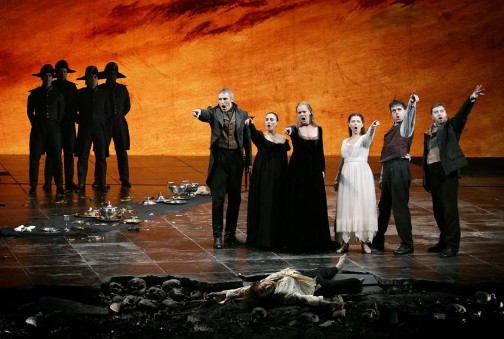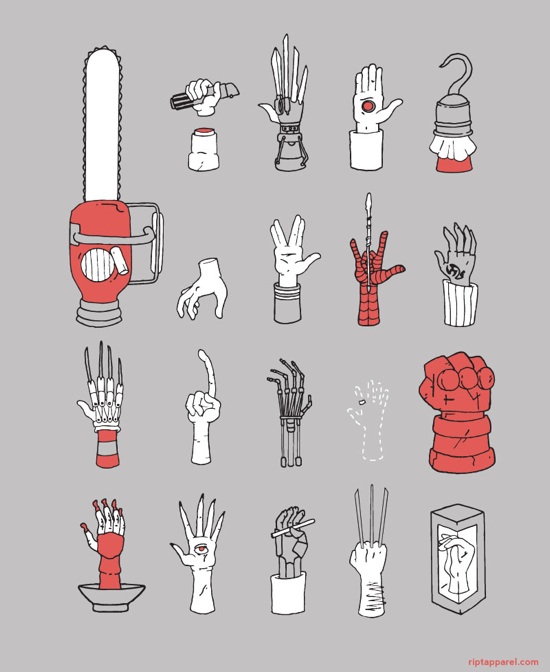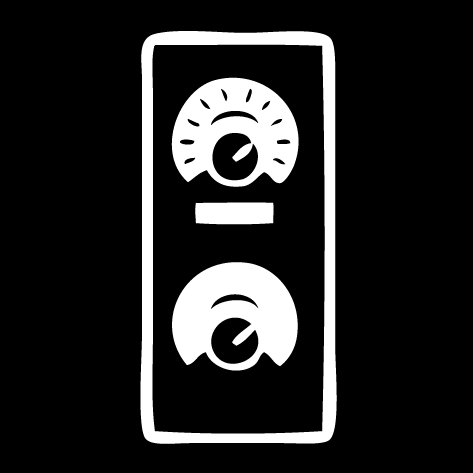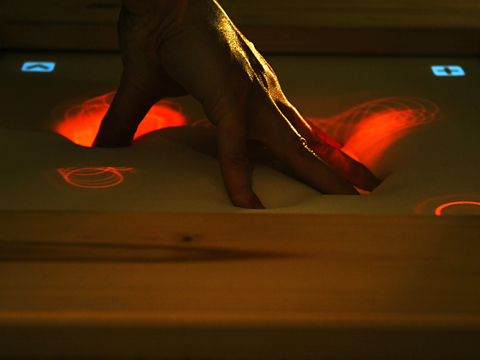SensorWiki.org: A collaborative resource for researchers and instrument designers
Elliot Sinyor, Julien Boissinot
Input Devices and Music Interaction Laboratory
Schulich School of Music, McGill University
Montreal, Canada
Abstract
This paper describes an online Wiki, a collaborative Web site designed to allow users to edit and add content. It was created at the Input Devices and Music Interaction Laboratory with the aim of promoting and supporting the construction of new musical interfaces. Although many individual universities and research centres offer sources of relevant information online, this project allows for easy sharing and dissemination of information across institutional and international boundaries. In this paper, the internal framework and categorization scheme for the Wiki is profiled, and each section is introduced. The benefits of joining this effort are clearly demonstrated, and the possible future directions of the project are detailed.
Keywords
sensors, Wiki, collaborative website, open content
1. Introduction
A Wiki, a term derived from the Hawaiian for “quick,” is a Web site configured to collect and distribute free information, by allowing site viewers to edit its content [18]. It is made up of two systems working together — a template layer which converts a simple markup language written by users to HTML documents, and a version control log that records the time and page on which each individual edit occurs. These two parallel subsystems facilitate non-destructive editing and help safeguard against vandalism [10]. By its nature, a Wiki makes possible many-to-many communication amongst contributers and users [4]. There are several Wiki software engines available, both proprietary and open source [13] [9] [12] [16] [6]. WikiMatrix.org [17], a Web forum for discussion of Wiki engines, lists 46 separate systems. The size of a Wiki is usually measured by article count, but several other options exist [7], which include:
- Total size of Wiki in bytes
- Total equivalent pages in A4 paper
- Total number and frequency table of words
- Number of articles in different byte size ranges, such as 50, 250, or 1000 bytes
- Size of articles N/L, 2N/L, … LN/L where N is the total number of articles and L is the number of languages in which articles are written
The largest Wiki by all measurements is the Wikipedia, an online collaborative encyclopedia project [4]. It utilizes WikiMedia Foundation’s GPL–licensed engine, Mediawiki [15], as does SensorWiki. While some Wikis require a short registration process for editors, as of writing the SensorWiki does not. (As of this publishing there has not yet been excessive amounts of vandalism, so a registration process has not proved necessary. If spam and editing by “bots” becomes an issue, this point will need to be reconsidered.) The advantage of Wikis as compared to traditional websites is that information can be quickly shared amongst all the interested members in a given field or community. Structured Wikis like SensorWiki attempt to combine this open nature with the format consistency and flexibility of a database application [14].
While some of the information compiled and developed by research labs is proprietary, there is an abundance of material that would be made public if the proper forum for its release were made available. The SensorWiki project is just such a forum.
2. Existing resources
There is much published research about sensors [11] [3]. Papers (for instance [1]) and more recently a book [8], address musical applications of sensors. Although these resources are useful because they have undergone a rigorous editing and review process, most of what is available stops short of providing specific data, such as information on sensor purchasing (where, how much), as this information changes often. This is also true for publications in journals and conference proceedings. To find practical information, one must usually conduct online research to determine what is available for a given task, compare specifications and prices, and finally make contact with a company and place an order. But entering the word “sensor” into a search engine such as Google yields millions of superfluous results. The process is not only extremely time-consuming, it is often repeated unnecessarily because the information gathered each time is not organized and preserved.
The creation of a resource tool about sensors in music is an ideal application for a Wiki system for several reasons: It serves as a single place to gather resources and information, it allows and encourages members of different institutions to share their findings and discoveries, and finally it can be updated quickly and easily as new information becomes available. It is then complementary to other sources of information, such as articles and books.
3. SensorWiki.org
SensorWiki is located at www.sensorwiki.org, and is currently organized into three sections:
- A comprehensive list of sensors, each with their own sensor description page.
- A database of references on interfaces and interaction.
- A section containing detailed tutorials related to sensor interface design.
3.1 Sensor list
Sensors in the list are organized in categories according to the physical phenomenon they sense, for instance, rotary position, linear position, or force/pressure/strain.
If a sensor can be used to sense more than one phenomenon, it is included under each category for completeness. However, this is only a repetition of the link; each leads to the same sensor description page.
Each sensor description page includes:
- An introductory paragraph where background is provided and general issues about the sensor are discussed.
- A section describing the practical use of the sensor, including ways of constructing conditioning circuits, mounting techniques, and type of signal output.
- A list of companies that offer this sensor, including a data sheet, price list, and link to the company’s site.
- Media featuring the sensor, such as images, video, circuit diagrams, and CircuitMaker [2] simulation files.
- External links and a reference list of resources used in the writing of the article.
3.2 Reference list
The list of references started as a duplicate of the online resource Interactive Systems and Instrument Design in Music Working Group (ISIDM), meant to provide a knowledge-base for researchers and workers in the field [5]. Although the information included in the original knowledge-base hosted at ICMA (International Computer Music Association) and later at McGill is invaluable, it is incomplete and difficult to update (it is a standard HTML webpage and not editable by the public). It is here proposed that SensorWiki provides a much better forum for this knowledge-base, as references are easily added and edited, and the discussion pages allow public communication on changes or direction. Like the original ISIDM webpage, the SensorWiki knowledge-base provides links and references for the following topics:
- Evolution of interactive electronic systems
- Interaction & performance
- Sensors & actuators
- Interface design
- Mapping
- Software tools
- Dance technology
Each topic consists of three sections: Introductory References, which introduces the topic to beginners, clarifies some of the vocabulary used, and provides references and links to published work that outlines the topic, an exhaustive Bibliography in Computer Music Journal format, and an Internet Directory, linking to useful resources available online. We hope that by moving the ISIDM to the SensorWiki we will achieve the level of collaboration originally intended by the working group.
3.3 Tutorials
SensorWiki also includes tutorial pages oriented toward guiding a reader through specific projects from beginning to end. These are usually prepared by individuals, and subsequently edited in minor ways. Initial examples include an overview of basic sensor interfacing techniques, and a lucid and complete tutorial on integrating the USB with microcontroller projects.
3.4 Applications
It is hoped that this flexible and comprehensive resource will prove useful for researchers who wish to use sensors in their projects. Since it is hosted by a music technology research lab, the Wiki’s content tends to be music-oriented, however the information it provides is also useful for robotics, installations, interactive dance systems, and research in a host of other fields. Reasons for joining the SensorWiki project should be clear—the project will allow everyone in our community to benefit from the knowledge and experience of their colleagues. In the same spirit that the NIME and ICMC conferences foster research, new innovation and collaborations, the Sensor Wiki will allow individuals and schools working in the field to grow and learn faster together than they could apart.
4. Future expansion
The future direction and expansion of the SensorWiki project will depend heavily on groups and individuals not associated with the IDMIL or the Music Technology Area of McGill University. Although the initial contributors guided the design and formatting of the Wiki in a two-year development process, the content provided thus far is intended to merely initiate a dialogue and sharing of information that will benefit all of us equally, and the basic design and layout may change according to the suggestions of new users.
More accounts of individual experiences with the interface design process are much needed. Backgrounds on musical instruments, commercial controllers, and experimental designs could also be included. Plans for expansion over the coming year include a comprehensive list of actuator technologies to match the sensor list, as well as overviews and tutorials on haptic feedback systems.
5. Conclusions
Already, SensorWiki is a valuable repository of sensor information; as of writing there are approximately 49 legitimate content pages, with over 33,543 page views. Other institutions have begun linking to the site, such as the University of Oslo, the University of Washington’s Center for Digital Arts and Experimental Media, Stanford University’s Center for Computer Research in Music and Acoustics, and the Department of Music at Columbia University. We invite researchers and all individuals who wish to share their expertise to participate in the development of the SensorWiki. With broad participation, it could serve as a central place for open music technology information, a summary for students new to the field, and a valuable resource for students, hobbyists, and researchers.
6. Acknowledgments
The authors would like to acknowledge the contributions of many students and colleagues since the inception of this project in 2004, including Paul Kosek, Mark Zadel, Avrum Hollinger, Stephen Sinclair, Simon de Leon, Mark Marshall, and Darryl Cameron. This pro ject is partially funded by a Natural Sciences and Engineering Research Council of Canada (NSERC Discovery Grant) to the first author and by research funds from the Centre for Interdisciplinary Research in Media Music and Technology (CIRMMT) to the third author. Preemptive thanks are also due to all those who have yet to contribute!
7. References
[1] Bongers, B. Physical Interfaces in the Electronic Arts. Interaction Theory and Interfacing Techniques for Real-time Performance. In Wanderley, M. M. and Battier, M., eds., Trends in Gestural Control of Music. Ircam — Centre Pompidou, 2000.
Full text (pdf, 6.2 MB)
[2] CircuitMaker software by Altium (no longer sold or supported). 2006.
[3] Fraden, J. Handbook of Modern Sensors. Physics, Design and Applications. Springer Verlag, 3rd edition, 2004.
[4] Lih, A. Wikipedia as participatory journalism: Reliable sources? Metrics for evaluating collaborative media as a news resource. In Proceedings of the International Symposium on Online Journalism, 2004.
Full text (pdf, 304 KB)
[5] Wanderley, M. M. Report on the First 18 Months of the ICMA/EMF Working Group on Interactive Systems and Instrument Design in Music – ISIDM. In ICMA Array, 2002.
[6] MediaWiki. http://www.mediawiki.org/wiki/mediawiki. 2006.
[7] Meta-Wiki. Wiki stats other than the article count. http://meta.wikimedia.org/wiki/, 2006.
[8] Miranda, E. R., Wanderley, M. M. New Digital Musical Instruments: Control and Interaction beyond the Keyboard. A/R Editions, 2006.
[9] MoinMoin. http://moinmoin.wikiwikiweb.de/. 2006.
[10] O’Murchu, I., Breslin, J. G., Decker, S. Online social and business networking communities. In Proceedings of ECAI 2004 Workshop on Application of Semantic Web Technologies to Web Communities, 2004.
Full text (pdf, 413 KB)
[11] Pallas-Areny, R., Webster, J. Sensors and Signal Conditioning. Wiley Interscience, 2nd edition, 2001.
[12] PhpWiki. http://phpwiki.sourceforge.net/. 2006.
[13] TWiki. http://twiki.org/. 2006.
[14] TWiki:StructuredWiki. http://www.twiki.org/cgi-bin/view/Codev/StructuredWiki. 2006.
[15] Voß, J. Measuring Wikipedia. In Proceedings of the 10th International Conference of the International Society for Scientometrics and Infometrics, 2005.
Full text (pdf, 356 KB)
[16] CTEWiki. http://ctewiki.pbworks.com/. 2006.
[17] WikiMatrix. http://www.wikimatrix.org/. 2006.
[18] Wikipedia:Wiki. http://en.wikipedia.org/wiki/wiki. 2006.
NIME-06, June 4-8, 2006, Paris, France
Copyright remains with the author(s).







